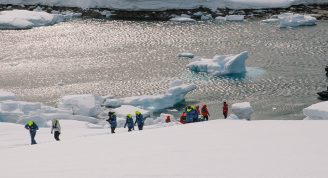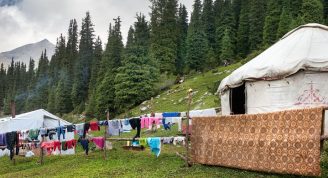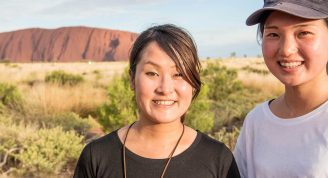Description
Beginning in the futuristic cityscapes of Nur-Sultan (until recently, Astana), join your small group on an epic exploration from Kazakhstan, through mountainous Kyrgyzstan, the remote lands of Tajikistan, Islam-influenced Uzbekistan, all the way to grand Ashgabat in Turkmenistan. For those counting, that’s five Stans. These vast lands are still oft bypassed, despite offering outstanding beauty and fascinating sights. The allure lies in the heritage of the Silk Road, where ideas, culture and people flowed from East to West, and in the soaring mountain landscapes that still play host to a traditional nomadic lifestyle. Journey through cities featuring reminders of Soviet occupation and out into the stunning wilderness, where ancient history and welcoming hospitality will illuminate a region often left out of the tourist light. Central Asia doesn’t get much more comprehensive than this.
Important Notice: The border between Kyrgyzstan and Tajikistan is not open at the moment. We will review the status of trip operation across Kyrgyz-Tajik border about 3 months before departure and inform our customers accordingly.
- Venture through the little-visited backcountry of Kazakhstan on a full day jeep tour of the otherworldly Boszhira Valley.
- Travel alongside locals and admire wild, sweeping vistas on epic train rides across the Kazakh steppe.
- Soaring along the iconic Pamir Highway is an unforgettable experience, especially in fine weather when the mighty peak of Muztag Ata rears its head.
- Skirting the border with Afghanistan, get glimpses of the other side, from the hair-raising Afghan-built footbridges (ovrings) to the exotic imports on display in Khorog's local bazaar.
- The much-photographed Registan in Samarkand is one of the true pinnacles of Islamic architecture. You'll be wowed by the scale, grandeur and beauty of the monuments to iconic figures such as Tamerlane and the Persian influenced madressas, mosques and mausoleums.
- Witness the eternal flames of the Darvaza Crater, or the 'Door to Hell', as you camp nearby – one of the strangest, most mesmerising geological oddities on earth.









